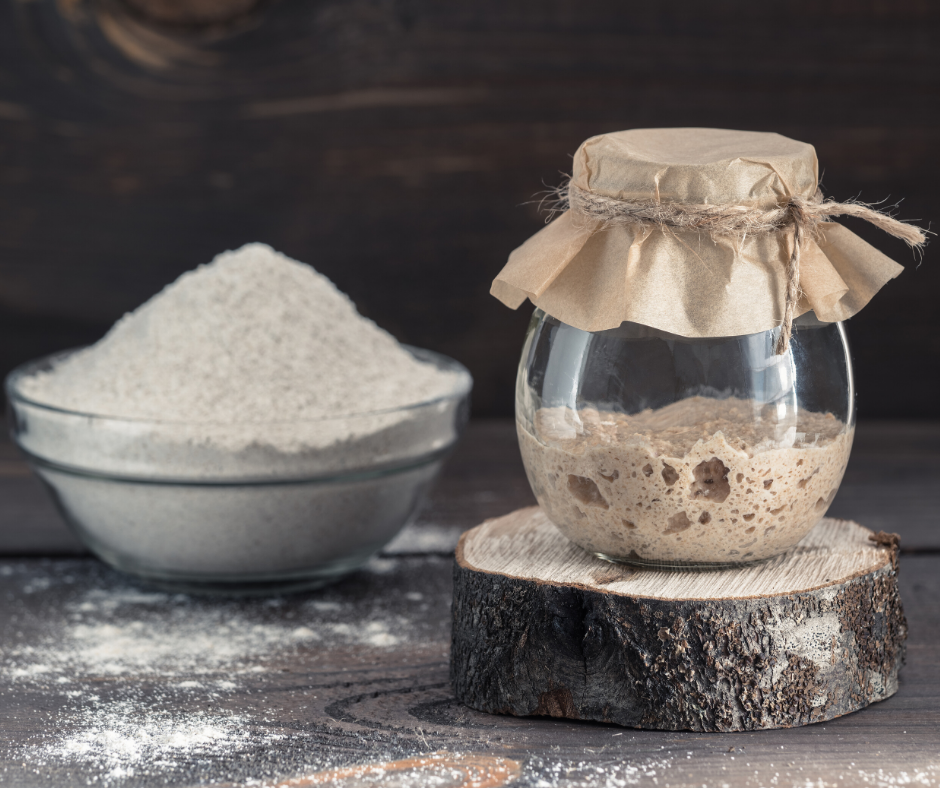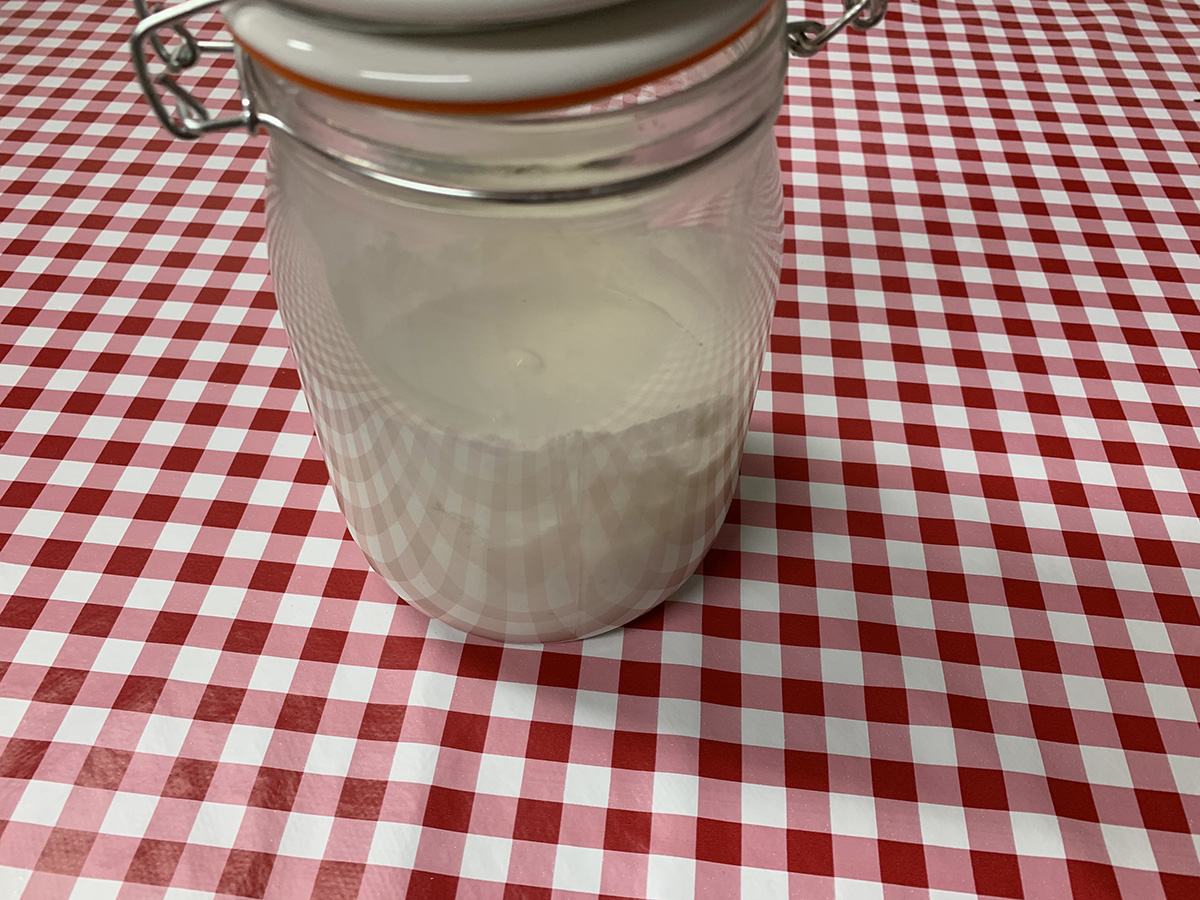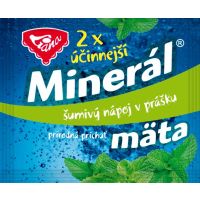Is it one of the many current trends or is yeast really beneficial for our body? Definitely option B!
Sourdough compared to classic yeast has health benefits :
- does not burden the digestive system,
- deacidifies the body
- is without added chemistry,
- the pastry is tastier and lasts longer.
If you decide to start sourdough, you won't want any bread other than homemade sourdough. The history of fermentation goes back a long way; let's remember the fragrant breads of our grandmothers. They lasted a soft week ! The secret was in the leaven. So you don't have to worry that this is a new short-term trend.
Many people confuse leavening with yeast - yeast. It's not the same! To make sourdough, we only need flour and water , and the necessary bacteria continue to multiply on their own. Yeast contains bacteria of alcoholic fermentation, which unnecessarily burden the human body. Just the fact that bread with yeast mysteriously rises in a few minutes, unlike sourdough, where the process is more lengthy, but let's not forget that it is healthier.
YEAST
It is a living organism that needs only water and flour for preparation. By adding water to the flour, we start hydration and hundreds of bacteria get to work. In order to be able to use yeast in baking, it is necessary to feed it regularly for about 7 days. If you don't have time to make yeast at home, someone from the neighborhood can give it to you.
You can find the recipe for making gluten-free sourdough from rice flour here .
You can find the recipe for making gluten-free sourdough from Bread mix white Liana here .

PROS OF FERMENTATION
1. Bread made from sourdough is easier to digest , i.e. it does not burden digestion. Yeast bacteria break down gluten and it passes more easily through the intestines without causing harm. Celiacs can prepare gluten-free yeast (link above).
2. Distributes phytic acid - this acid is found in the shell of the grain, so it is in whole grain flours. It prevents the intake of essential minerals such as calcium, zinc, copper, magnesium and iron. The yeast distributes the phytic acid and thus allows important substances to reach the body.
3. It deacidifies the body - it breaks down the proteins and starches in the flour, which makes the bread tastier and healthier. Good news for those who have a problem with heartburn after eating baked goods; with sourdough bread, this problem will not bother you.
4. No other additives are used in its preparation - only flour and water are used! No chemicals, because the yeast creates lactic acid, which preserves the bread naturally, not artificially. For this reason, sourdough bread has a longer shelf life compared to yeast bread.
5. It is suitable for diabetics - because it has a lower glycemic index. After consuming sourdough bread, the blood sugar level does not rise so sharply. Gluten-free sourdough bread is also suitable for celiacs.
6. Adjusts the condition of the skin - yeast regulates the intestines, removes toxins, and this is also reflected in our skin, or improves the condition of allergies, eczema, acne.
7. Protects teeth - yeast prevents the formation of tooth decay, which is caused by the distribution of phytic acid.
8. It flatters our figure - beware! calorically sourdough bread is about the same as yeast bread, with the only difference being that sourdough bread has a lower glycemic index. What does it mean? Sourdough bread fills us up faster, so we eat less and the sugar level does not rise quickly.
CONS OF FERMENTATION
The only downside is the time required for preparation. If we assume that sourdough bread can be prepared in about 18 hours, many will be discouraged and prefer to use yeast instead. BUT! The overall process of baking sourdough bread has several steps. On the first day, we will prepare the leaven from flour, water and yeast. Let it ferment in a warm place for 12 hours. The next day, we will prepare the dough, which we will leave to rise. Those 18 hours are taken up with the preparation as well as the leavening, and you have plenty of free time for yourself between leavening.
YEAST VS. YEAST
Yeast is a leavening agent that makes the dough rise beautifully in a few minutes. The dough is filled with bubbles 10 times faster than with yeast. However, this will affect the final taste and ultimately our health. The time saved is replaced by unnecessarily artificial added extras. Unlike when working with yeast, with yeast you must also use sugar. Yeast can be used in the production of face masks, spreads or drunk as a drink mixed with water.
Sourdough or yeast bread
Since we spend a lot of time at work, we don't want to bake bread when we get home, so we reach for bread from the store - made from yeast. Have you ever wondered if it's worth it? In the past, leaven was so valuable in the household that parents gave it as a dowry to their daughter who was leaving home.
We recommend our page with recipes, among which you will also find sourdough recipes. You can find the list of recipes here .





